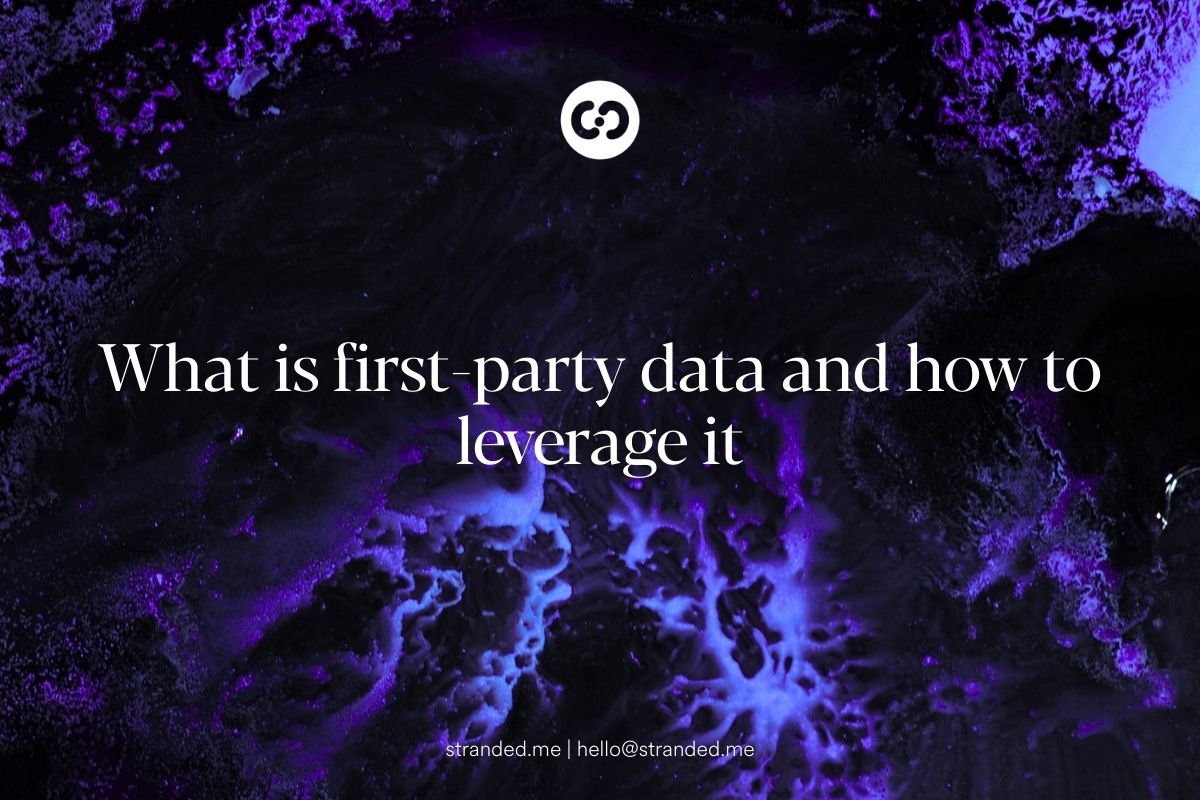What Is First-Party Data and Why It Matters for Marketing in 2025
Updated August, 25, 2025 · Min Read

© Stranded
Customer data is one of the most valuable assets a business owns. When used effectively, it provides deep insights into your audience, helps you make smarter marketing decisions, and improves the customer experience.
But not all data is created equal. As we move deeper into a cookieless world, marketers need to rely less on third-party tracking and more on data they can trust, own, and control. That’s where first-party data comes in.
First-party data is information you collect directly from your customers through interactions with your brand. Unlike third-party data (purchased or gathered through outside platforms), first-party data is yours—making it more accurate, privacy-compliant, and actionable.
Examples of first-party data include:
- Email addresses collected through newsletter sign-ups or gated content
- Contact information such as phone numbers and mailing addresses
- Transactional data like purchase history and average order value
- Behavioral data from website activity, app usage, or loyalty programs
- Demographic details customers provide voluntarily (e.g., age, gender, location)
Because this data comes straight from your audience, it gives you clearer insight into who your customers are, what they want, and how they behave.
With Google phasing out third-party cookies by the end of 2025, brands can no longer rely on outside sources to fuel personalization and targeting.
First-party data offers several advantages:
- Ownership & control – You don’t depend on external platforms for access.
- ccuracy – Data comes directly from customer interactions, reducing errors.
- Compliance – Easier to align with privacy laws (GDPR, CCPA) since customers willingly share information.
- Personalization – Enables relevant, one-to-one marketing experiences.
Helpful article: Search Engine Journal explains why first-party data is becoming the “new gold standard” for marketers.
Building a strong first-party data foundation starts with customer touchpoints. Some effective methods include:
- Email sign-ups and lead magnets – Offer value (discounts, guides, or exclusive content) in exchange for an email address.
- Purchase and transaction history – Use shopping carts, order confirmations, and receipts to capture buying patterns.
- On-site behavior tracking – Record which pages customers visit, how long they stay, and what they click on.
- Loyalty programs – Encourage customers to share data in exchange for rewards.
- Surveys and feedback forms – Ask customers directly about their preferences and satisfaction.
When applied strategically, first-party data transforms your campaigns. Here are a few ways to put it to work:
- Personalize customer experiences: Example: If a customer browses skincare products but doesn’t purchase, send a follow-up email with recommendations or a discount code.
- Audience segmentation: Divide your customers into groups (e.g., “repeat buyers,” “high-value customers,” “first-time visitors”) and craft messaging that resonates with each segment.
- Retargeting and lifecycle marketing: Use first-party data for abandoned cart reminders, loyalty offers, or product upsells.
- Predictive analytics: Apply machine learning tools to forecast what customers are likely to buy next based on historical behaviors.
First-party data isn’t just another dataset—it’s the foundation of modern, privacy-first marketing. By collecting it directly from your customers and applying it responsibly, you gain the ability to:
- Create personalized experiences
- Strengthen customer loyalty
- Improve ROI on ad spend
Build trust in a world where privacy matters more than ever
As Google and other platforms shift away from third-party cookies, the brands that thrive will be those that master first-party data strategies today.